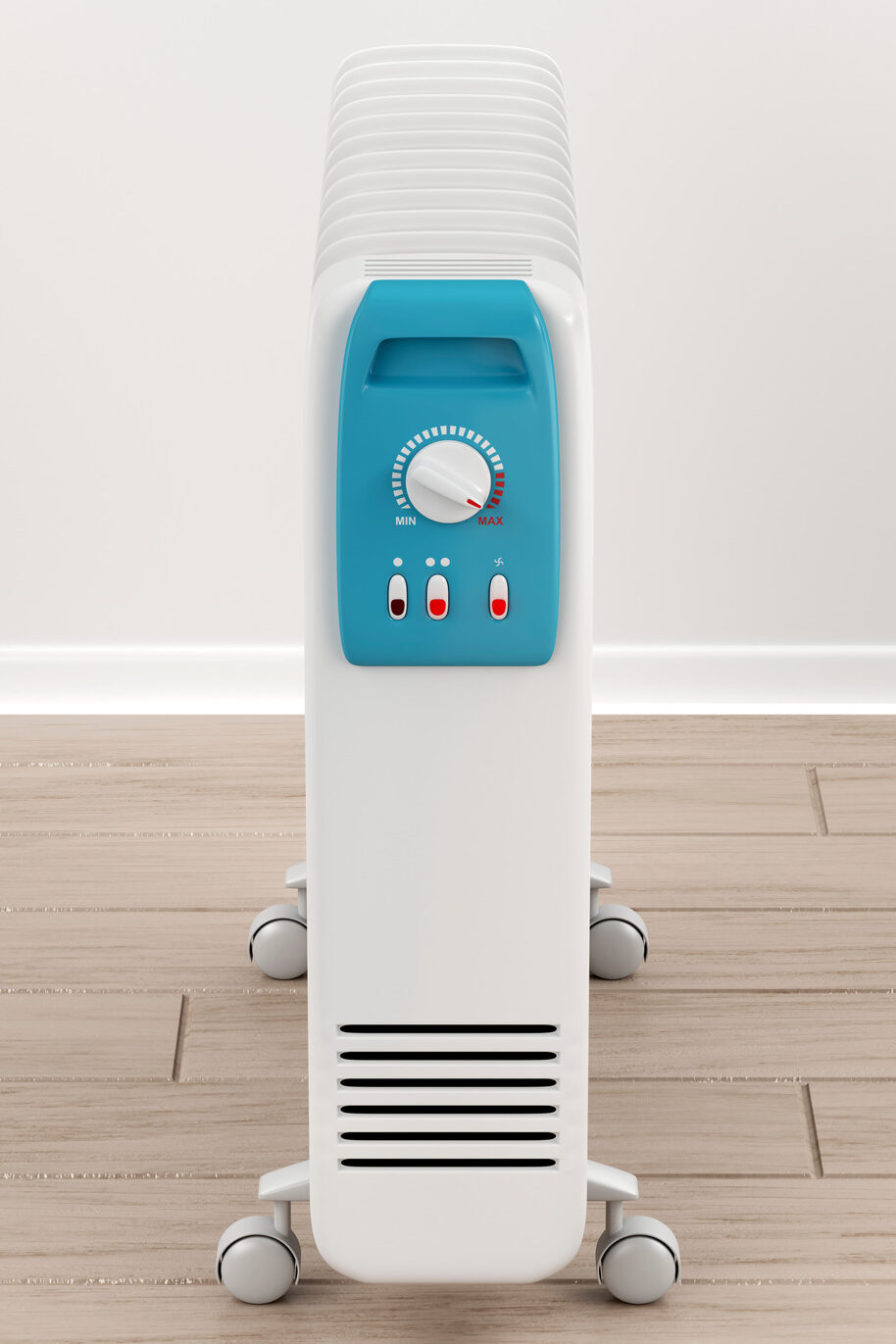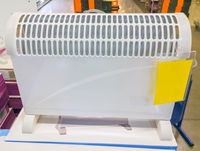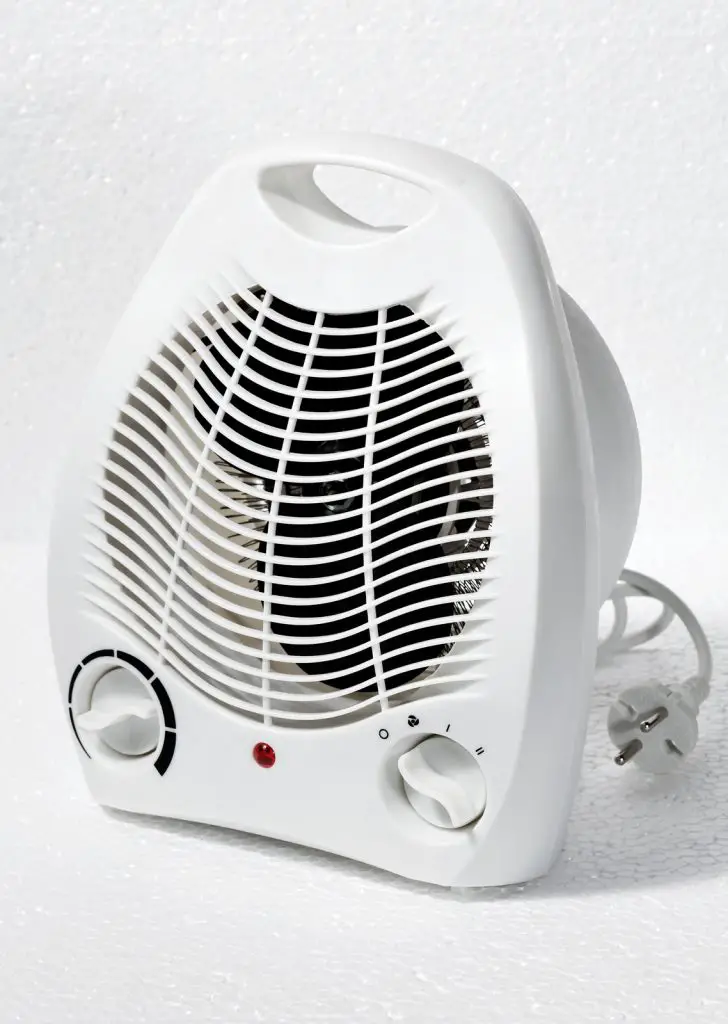Electric heaters have been around for decades and are a more popular choice for heating homes and businesses. Electric heaters have several advantages over traditional heating methods, including better energy efficiency and lower emissions. 1p per hour electric heaters have become increasingly sought out. But do they really exist?
Find the cheapest heaters to run in our article here

There are many myths about what type of heater can provide one pence per hour cost when it comes to electric heaters. To help clear up any confusion, here is a myth-busting guide to the different types of electric heaters that could provide this level of energy efficiency, as well as the advantages and disadvantages of each.
Here, we’ll look at why 1p per hour electric heaters don’t exist but you can still find good, cheap electric heaters.
1p per hour electric heaters: do they exist?
At today’s electricity prices, 1p per hour electric heaters do not exist. The lowest price is around 33p/kwh so a 1kW electric heater will cost at least 33p to run for one hour of use. You may be able to take advantage of cheaper night rates on certain energy tariffs or claim rebates from the government to help with the cost.
Electric heaters that cost 1p per hour used to be available in the UK, but due to the increase in the energy cap, the cost has now risen to 2p per hour. To now achieve a cost of 1p per hour for an electric heater, it would require a maximum heat output of only 30 watts, which is insufficient for heating a room.
Why 1p per hour heaters don’t exist
The amount of energy required to heat a given space depends on several factors, such as the size of the space, the insulation, and the temperature of the ambient air. As a result, the amount of energy required to heat a space increases as the space gets larger, or as the insulation or the ambient air temperature decreases.
Electric heaters also use electricity to power internal components like fans, motors, and heating elements. This means that even if the cost of electricity was reduced to 1p per hour, these components would still require energy to operate, increasing the overall cost of running the heater.
Many people believe that electric heaters must be costly to operate. Modern electric heaters, on the other hand, are quite energy efficient. But it is very unlikely that you will find a 1p per hour heater.
Types of electric heaters
Let’s look at the main types of electric heaters that could offer one pence per hour cost:
Storage heaters
Storage heaters are a type of electric heater that store up energy during the night and then release it during the day. This means you can take advantage of cheaper off-peak electricity rates.
Storage heaters are a good option for those who are looking for a low-cost electric heating solution that can cover a larger area. However, they tend to be expensive to install and they require more maintenance than other types of electric heaters.
Panel heaters
Panel heaters are a type of electric heater that use convection to heat a room. A panel heater is typically wall-mounted and it can be used to provide direct, localised heating.
Panel heaters tend to be more energy efficient than storage heaters, and they are usually much cheaper to install. However, they may not be suitable for larger rooms, and they are not as powerful as storage heaters.
Convector heaters

Another type of electric heater that could provide one pence per hour cost is a convector heater. Convector heaters use an electric element to heat up a metal plate, which then radiates heat into the room.
Convector heaters are usually much cheaper to install than storage or panel heaters, and they can provide a more even level of heat throughout a room. However, convector heaters tend to be less energy efficient than other types of electric heaters.
Fan heaters

Electric fan heaters are typically the least expensive option. These heaters operate by blowing air over a heated element via a fan. This air is then pushed into the room, providing a quick and easy method of heating a room. Electric fan heaters can be purchased for as little as 1p per hour.
The most significant advantage of electric fan heaters is their low cost. They are relatively inexpensive to purchase, and they have low operating costs. Electric fan heaters, on the other hand, are inefficient. Because the heat is generated by a fan, it can be quite noisy and is not recommended for bedrooms. Furthermore, if not used properly, electric fan heaters can cause a fire.
Oil filled heaters

Oil-filled heaters are more expensive, but they have numerous advantages. These heaters contain oil and have an electric element that heats the oil. This oil is then used to heat the room, resulting in a more consistent level of warmth.
Oil-filled heaters are generally quieter and safer to use than electric fan heaters. They are also more efficient because they do not lose heat through the fan.
The most significant disadvantage of oil-filled heaters is their high cost. These heaters are typically more expensive to purchase and can cost as much as 70p per hour to operate. They are also heavier than electric fan heaters, making them less portable.
Pros and cons of electric heaters
Let’s look at the pros and cons of each type of electric heater:
Storage heaters provide a good level of energy efficiency, but they are expensive to install and require more maintenance than other types of electric heaters.
Panel heaters are cheaper to install and more energy efficient, but they may not be suitable for larger rooms.
Convector heaters are cheaper to install than the other two types above, but they tend to be less energy efficient.
Electric fan heaters are the most cost-effective option, but they are inefficient and can cause a fire.
Although oil-filled heaters are more efficient and safer to use, they are also more expensive and heavier.
Another potential disadvantage of low power output electric heaters is that they are less efficient than other types of electric heaters. This is because they are designed to operate at lower temperatures, so are usually not sufficiently powerful enough to heat a room, only their immediate area.
Read more on home heating at Energy Saving Trust
Other factors to consider
If you can take advantage of time-of-use tariffs, you can reduce your overall electricity costs by using an electric heater designed to work best with the tariff. For example, an electric heater with a timer can operate during off-peak hours, such as at night, when electricity rates are lowest. But only if you have an economy 7 meter and tariff set up with your electricity supplier.
You should be able to reduce your energy costs further by receiving rebates and discounts for electricity from your supplier and the government. First check with your electricity supplier for the cheapest tariff and what type of financial help they can offer. Then visit the government website for available financial help with energy costs.
Conclusion
In conclusion, even if an electric heater were to cost 1p per hour to run, it likely wouldn’t be powerful enough to heat a large space quickly.
When it comes to one pence per hour cost electric heaters, they really don’t exist at the energy prices we have now. You will need to look at the most energy efficient option but one that adequately heats up the room.
The best option will be determined by your specific needs and budget. Whichever type of electric heater you choose, make sure to research your options and compare prices to get the best deal.
Read related articles:
- Electric Heaters That Are Cheapest to Run in 2022
- These Appliances Use The Most Electricity In Your Home
- How To Use Storage Heaters Efficiently: 11 Tips To Help
*The information in this article should be used for general guidance only and not as financial or health advice. Full details are on the link in the footer to our disclaimer page. Always discuss your requirements with a competent and suitably qualified professional before undertaking any work.
